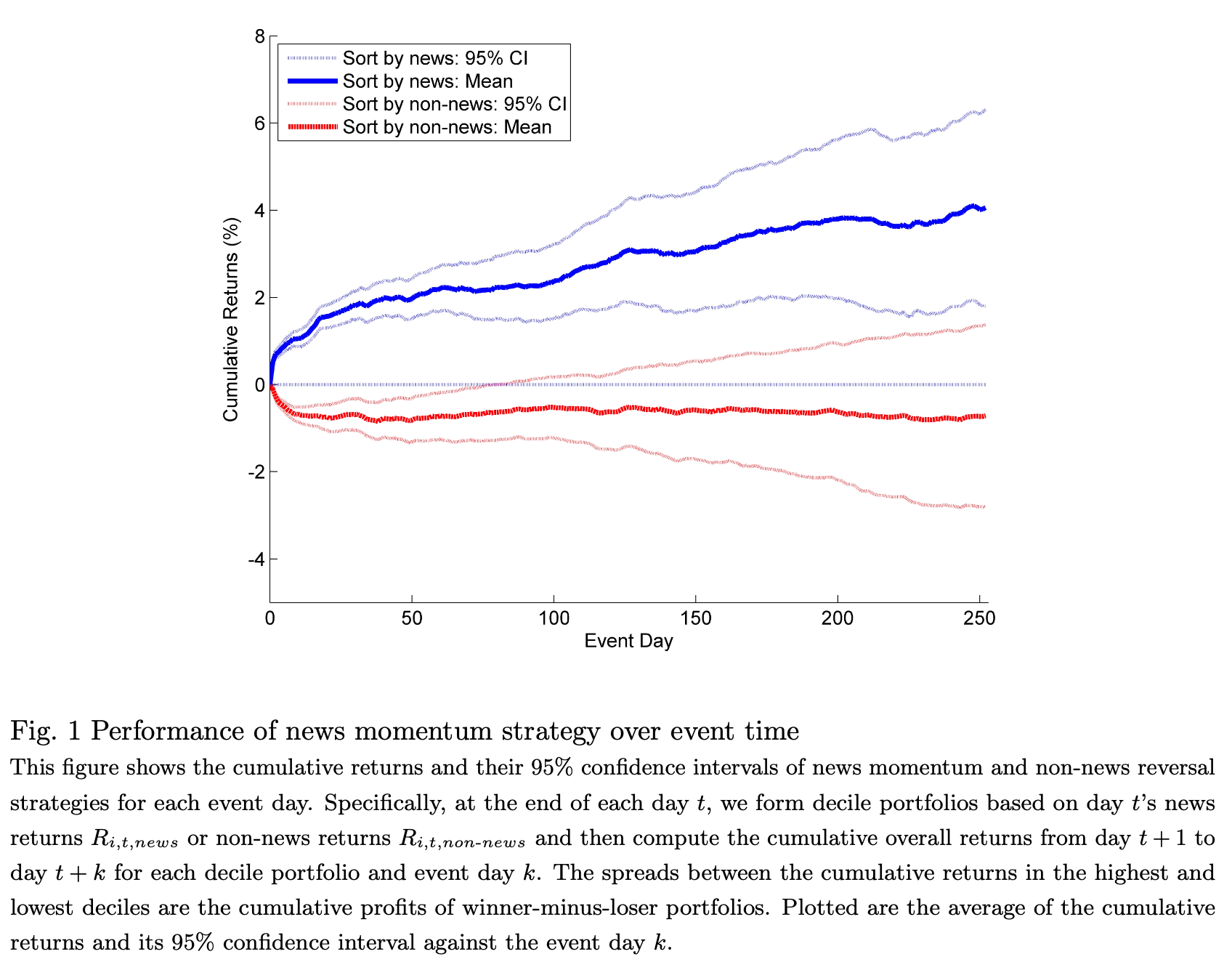💡 Takeaway:
News momentum is strong and persistent. Trading on recent firm-specific news generates robust profits, especially using high-frequency data.
Key Idea: What Is This Paper About?
The paper decomposes daily returns into news-driven and non-news-driven components using 15-minute and overnight returns. It finds a strong, persistent drift following firm-specific news, consistent with underreaction. A simple trading strategy buying firms with high news returns and shorting those with low news returns generates abnormally high returns.
Economic Rationale: Why Should This Work?
📌 Relevant Economic Theories and Justifications:
- Investor Inattention: When attention is distracted (e.g., Fridays, macro uncertainty), underreaction is stronger.
- Analyst Delays: Analysts adjust forecasts slowly and partially, reinforcing price drifts.
- Sticky Beliefs: Forecast revisions lag news, creating prolonged adjustment.
- Underreaction, Not Overreaction: No reversal even after a year; it's true drift.
📌 Why It Matters:
This evidence challenges the belief in full price efficiency and shows how news-processing frictions and behavioral biases create predictable return patterns.
Data, Model, and Strategy Implementation
Data Used
- Period: 2000–2012 (main), 2013–2019 (out-of-sample)
- News Source: RavenPack (Dow Jones Newswire)
- Returns: Intraday (15-min) + Overnight (from TAQ)
- Other Data: CRSP, Compustat, IBES (analyst forecasts)
Model / Methodology
- Return Decomposition:
- Identify return intervals with firm news
- Define “news return” vs “non-news return”
- Portfolio Construction:
- Each day at 4 p.m., sort by same-day news return
- Long top decile, short bottom decile
- Hold for 1 week with overlapping positions
- Event Study & Regression:
- Cumulative returns by decile
- Fama-MacBeth regressions with controls
- Robustness: mid-quote returns, characteristic-adjusted returns, out-of-sample
Trading Strategy (News Momentum Strategy)
- Signal Generation:
- Use same-day intraday and overnight return triggered by firm news
- Execution:
- Enter trades at 4 p.m. market close
- Hold for 5 days (exit at next week’s close)
- Overlapping rebalance (20% daily turnover)
- Risk & Cost Control:
- Filter by price ($1+ or $5+)
- Estimate trading cost via proportional effective spread (~18–20 bps)
- Return robust after transaction and short-sale costs
Key Table or Figure from the Paper

📌 Explanation:
- The figure plots cumulative returns of long-short portfolios based on news returns and non-news returns over 252 trading days after portfolio formation.
- The news-based strategy shows a clear and consistent upward drift with no reversal for over a year, highlighting sustained underreaction.
- In contrast, the non-news-based strategy quickly reverses, confirming the pattern is unique to firm-specific news.
- The return spread between top and bottom decile portfolios persists and grows over time—solid visual evidence of the news momentum effect.
Final Thought
💡 The market reads headlines—but not fast enough. High-frequency news creates a durable alpha. 🚀
Paper Details (For Further Reading)
- Title: Pervasive Underreaction: Evidence from High-Frequency Data
- Authors: Hao Jiang, Sophia Zhengzi Li, Hao Wang
- Publication Year: 2020
- Journal/Source: Journal of Financial Economics
- Link: https://ssrn.com/abstract=2679614
